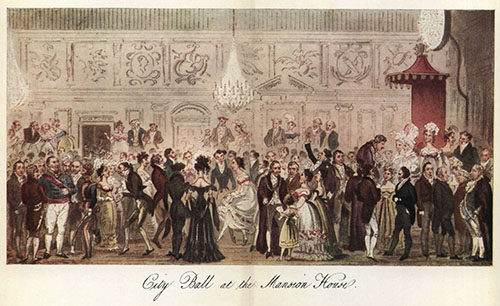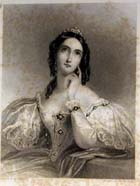Silver Fork Novels: A 19th century etiquette compendium

This project will examine 75 rare Silver Fork novels held by Special Collections. Silver Fork fiction was a popular genre from the 1820s to the 1840s which is hardly studied at all today. One of the primary purposes of Silver Fork fiction was to provide middle-class readers with an inside view to high society, with each text giving semi-satirical guides for upper class behaviour. This advice covers all aspects of aristocratic life, from clothing and beauty tips, to the treatment of servants, places to holiday, house décor, courtship protocol, duelling, politics—the advice simultaneously gave the middle classes the information they needed to emulate the aristocracy while at the same time often satirizing the aristocracy.
To provide some brief examples of this advice, in Thomas Lister’s novel Granby, Lister informs the reader that a true aristocrat should never reveal where he purchased his clothing and ‘scorned to share his fame with his tailor’. In Catherine Gore’s Cecil, she writes that “Of all physical defects, red hair is one of the least remediable.” In Hook’s Sayings and Doings, the lead aristocrat of the novel berates a vulgar dinner companion by yelling “’who, Sir, in the name of decency, ever eats cheese?”
 My goal is to improve general knowledge of these novels by gathering all of the fashionable advice they have to offer and compiling an etiquette compendium. Distilling an entire genre down to a few of pages of comedic, outdated or contradictory advice would not only spark public interest in the collection, but would also help scholars to better understand some of the complex social mores and patterns wrapped up in this fiction and how those mores may still affect thought regarding class and wealth today.
My goal is to improve general knowledge of these novels by gathering all of the fashionable advice they have to offer and compiling an etiquette compendium. Distilling an entire genre down to a few of pages of comedic, outdated or contradictory advice would not only spark public interest in the collection, but would also help scholars to better understand some of the complex social mores and patterns wrapped up in this fiction and how those mores may still affect thought regarding class and wealth today.
The Compendium can be accessed here.
For information on the Special Collections Silver Fork collections, click here.
Abigail Boucher, 2nd year PhD, English Literature
PhD Research: "The Aristocratic Body in Victorian Literature and culture" focuses on themes of medicalisation, masculinity, and the notion of tainted legacy in the victorian era. In the context of rapid medical advancement, the ‘science’ of physiognomy, the development of mass media, and the emergence of both photography and film, aristocrats’ visible physicality and bodily presence were often perceived as essential in determining the aristocracy’s suitability for power. Beliefs about aristocratic bodies played an important but very under-studied role in literary representation of social and political topics over the course of Victoria’s reign.

